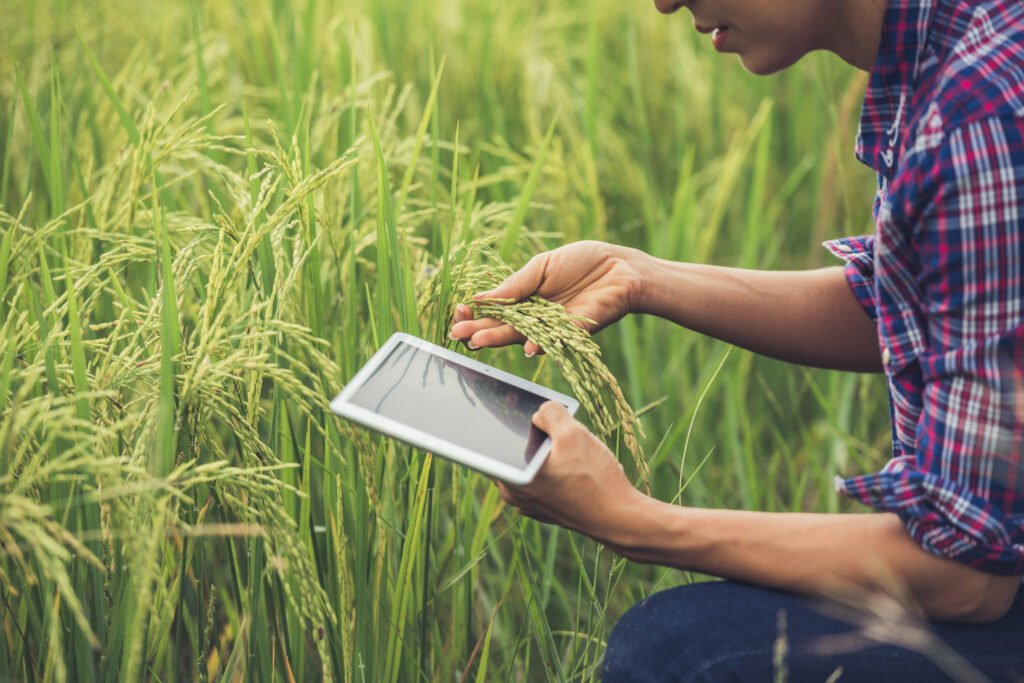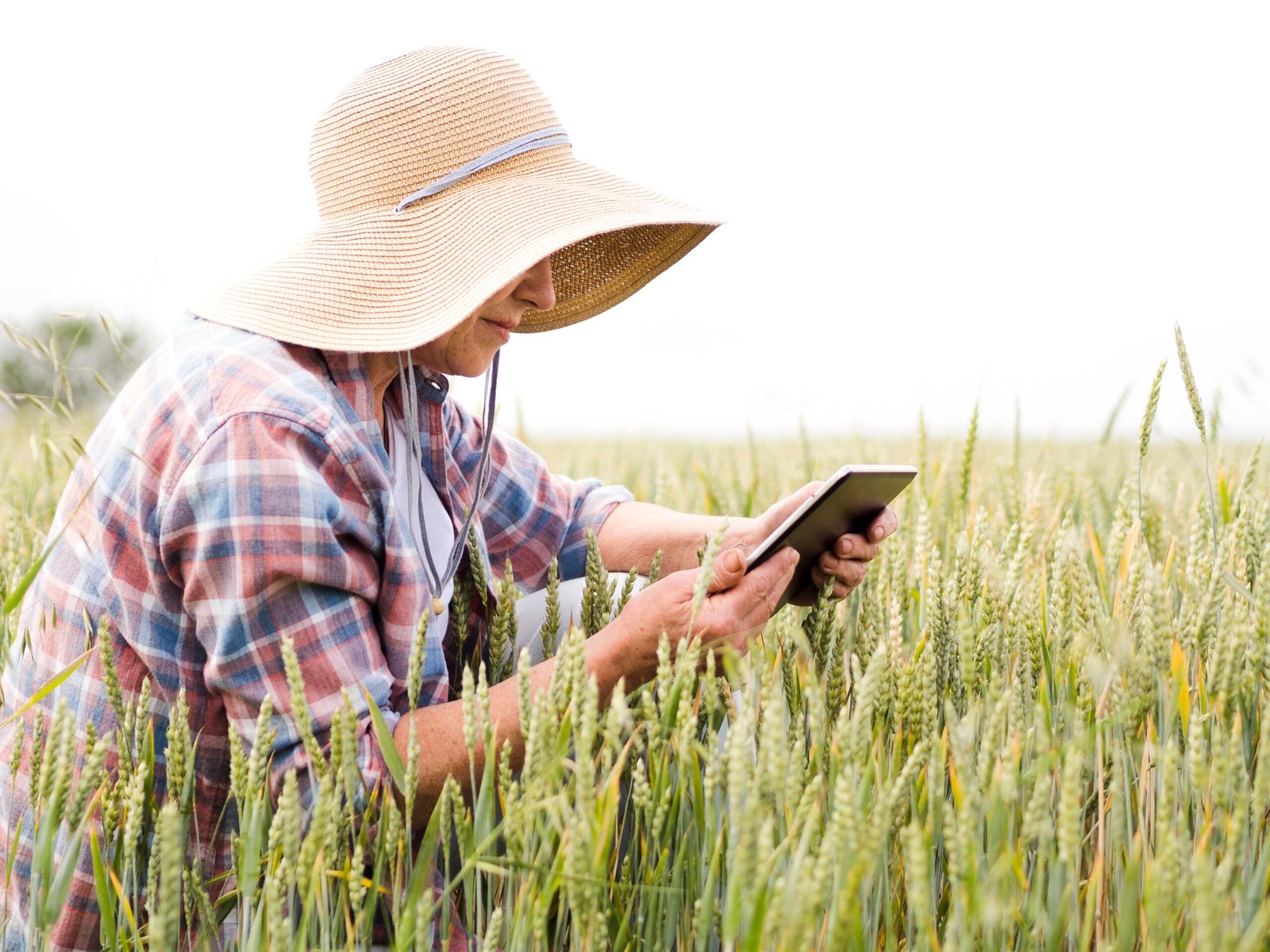In a rapidly changing world, traditional farming methods are no longer sufficient to meet the growing challenges of food security, climate change, and environmental sustainability. That's where e-agriculture steps in, transforming farms into connected, intelligent ecosystems. Paired with climate-resilient farming, it offers a long-term solution for building sustainable agriculture. This blog explores how these innovations are shaping a better, greener future through smart farming and digital agriculture.
What is E-Agriculture?
E-agriculture refers to the integration of information and communication technologies (ICT) in agriculture. This includes everything from mobile apps and online platforms to sensors, drones, and artificial intelligence. The main aim of e-agriculture is to enhance productivity, reduce waste, and empower farmers with real-time data.
By digitizing agriculture, e-agriculture is not only improving efficiency but also building resilience against unpredictable climatic events. It's the foundation upon which modern, climate-resilient farming is built.
Why Climate-Resilient Farming Matters
Climate-resilient farming is all about adapting agricultural practices to withstand climate-related challenges like drought, floods, and extreme weather. As global temperatures rise, traditional farming becomes increasingly vulnerable. That’s why climate-resilient farming is now a critical component of sustainable agriculture.
This method promotes drought-resistant crops, diversified farming systems, and ecosystem-based solutions — all of which work best when supported by e-agriculture and digital agriculture technologies.

Smart Farming Meets Climate Resilience
Smart farming uses technologies like IoT, AI, and satellite imagery to monitor crops, soil health, and weather patterns. These insights allow farmers to make informed decisions — from irrigation to pest control — that align with climate-resilient farming goals.
Thanks to e-agriculture, farmers can now receive weather alerts, monitor field conditions in real-time, and adjust practices accordingly. This data-driven approach supports sustainable agriculture by reducing resource use and increasing yields with minimal environmental impact.
The Role of Digital Agriculture in Sustainability
Digital agriculture encompasses all digital tools and platforms that enhance agricultural outcomes. It’s the broader ecosystem within which e-agriculture and smart farming operate. From digital marketplaces to blockchain-based traceability, digital agriculture is transforming food systems globally.
For climate-resilient farming, digital agriculture provides climate data models, crop simulation software, and forecasting tools that enable proactive farm management. Combined with e-agriculture, these tools help farmers build sustainable agriculture practices that are both profitable and environmentally friendly.
Practical Applications of E-Agriculture in the Field
Here are real-world examples of how e-agriculture is changing the game:
- Mobile Apps: Apps like Plantix help farmers diagnose crop diseases instantly, promoting smart farming practices.
- Sensors & Drones: These tools monitor soil moisture and plant health, making climate-resilient farming more precise.
- Weather Forecasting Tools: Apps that deliver localized weather data help farmers adjust planting schedules, a key aspect of climate-resilient farming.
- Digital Market Access: Platforms that connect farmers to buyers increase income and reduce post-harvest losses, essential for sustainable agriculture.
All these tools fall under the umbrella of digital agriculture, which works seamlessly with e-agriculture to build resilience and sustainability.

E-Agriculture and Sustainable Agriculture: A Powerful Duo
The synergy between e-agriculture and sustainable agriculture is undeniable. By promoting efficient resource use, reducing emissions, and improving productivity, e-agriculture becomes a key driver of sustainability.
In fact, climate-resilient farming is more successful when backed by smart farming practices powered by digital agriculture. These technologies ensure that farming remains productive even under harsh climate conditions.
1. Smart Farming for Smallholder Farmers
One of the biggest benefits of smart farming is its ability to level the playing field for smallholder farmers. With access to e-agriculture tools, these farmers can adopt climate-resilient farming practices that were once out of reach.
From low-cost soil sensors to open-source platforms, digital agriculture solutions are now more accessible than ever. This democratization of technology is a game-changer for sustainable agriculture worldwide.
2. Policy and Investment in E-Agriculture
To scale the benefits of e-agriculture, governments and private stakeholders must invest in infrastructure, education, and innovation. Strong policies supporting smart farming, climate services, and digital literacy can greatly enhance the adoption of climate-resilient farming.
Financial incentives and subsidies for digital agriculture tools also encourage farmers to shift toward sustainable agriculture. This systemic approach ensures long-term impact and resilience.
3. Success Stories from Around the World
- India: The Digital Green initiative uses videos to educate farmers on climate-resilient farming techniques.
- Kenya: M-Farm provides market prices and buyer connections via SMS, a classic example of e-agriculture in action.
- Netherlands: Precision farming methods and smart farming technology have made Dutch agriculture among the most efficient and sustainable agriculture systems globally.
Each of these examples highlights how digital agriculture is central to modern, resilient farming systems.

Looking Ahead: The Future of E-Agriculture
The future of e-agriculture is bright and full of promise. With emerging technologies like blockchain, machine learning, and robotics, the potential to scale climate-resilient farming and promote sustainable agriculture is enormous.
As more farmers embrace smart farming, we move closer to a world where digital agriculture is the norm, not the exception. This evolution supports not just productivity but also the planet.
Final Thoughts
The fusion of e-agriculture, climate-resilient farming, and sustainable agriculture is redefining how we grow food in the face of environmental uncertainty. Through smart farming and digital agriculture, we can empower farmers, protect ecosystems, and ensure food security for generations to come.
By investing in e-agriculture today, we lay the groundwork for a more climate-resilient, tech-enabled, and sustainable tomorrow.








